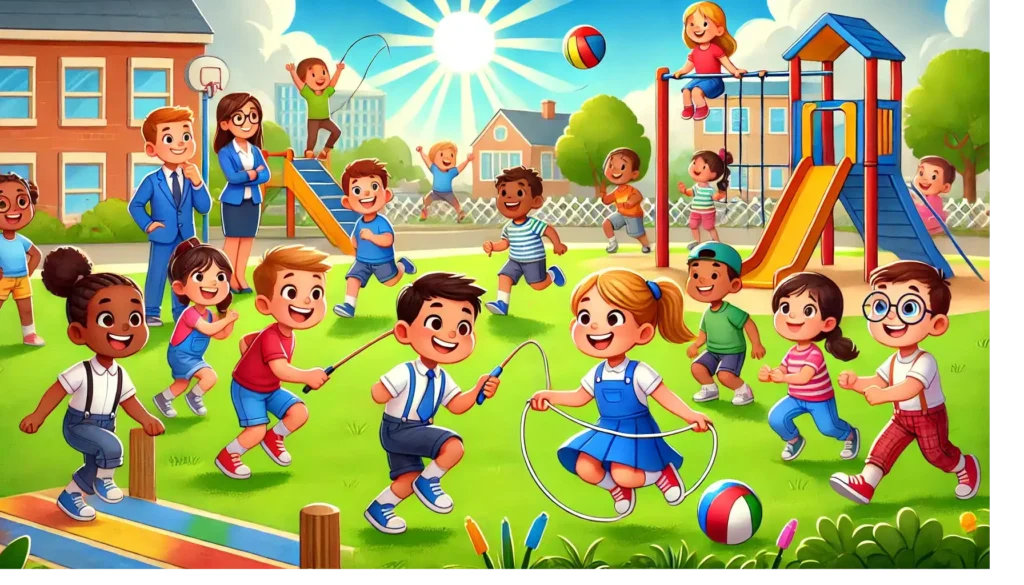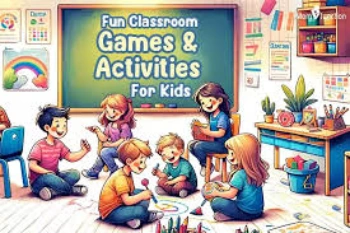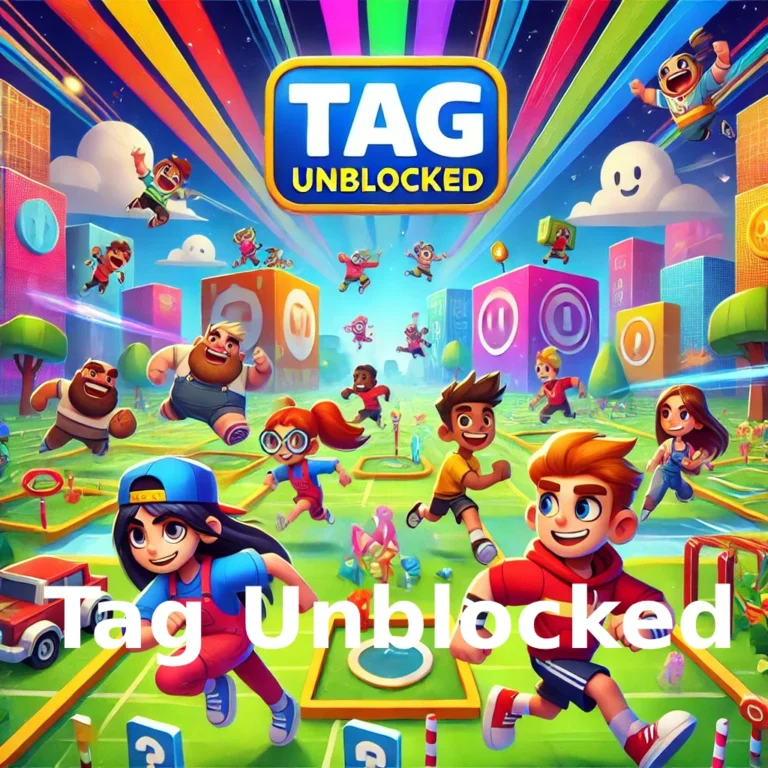Fun games at school are not just a way to pass time—they help students build friendships, stay active, and even improve problem-solving skills. Whether it’s a rainy-day classroom activity or an energetic outdoor game at recess, the right activities can make school days memorable and enjoyable. Teachers and students alike can benefit from having a repertoire of exciting games that cater to diverse interests and abilities.
Playing games at school isn’t just about having fun—it’s a proven way to boost teamwork, problem-solving, and social skills. Studies show that interactive play helps improve classroom dynamics and even enhances cognitive development in students. Whether it’s an exciting outdoor game like Capture the Flag or a creative classroom activity like Pictionary, these games keep students active, engaged, and ready to learn.
Indoor Classroom Games
1. Heads Up, Seven Up
This classic guessing game is perfect for quiet classroom fun. Seven students stand at the front while others put their heads down. The chosen seven tap a classmate on the shoulder, and everyone guesses who picked them.
- Benefits: Improves observation and guessing skills.
- Best for: Grades 2-8.
2. Pictionary
Draw and guess the word! Use a whiteboard or large paper to play this creative, engaging game. Students can take turns drawing while their team guesses the word.
- Benefits: Encourages creativity and teamwork.
- Best for: All grades, with words adjusted to age levels.
3. Silent Ball
Students pass a ball around silently. If they talk or drop the ball, they’re out! This is a great way to release energy while maintaining classroom order.
- Benefits: Develops focus and motor skills.
- Best for: Grades 3-9.
Outdoor Recess and Playground Games
1. Capture the Flag
Divide students into two teams, each with a “flag” to protect. The goal is to steal the other team’s flag and bring it back without getting tagged.
- Benefits: Promotes strategy and teamwork.
- Best for: Grades 4-9.
2. Red Light, Green Light
One student acts as the “traffic light” while others try to move forward. Players stop when the traffic light says “Red Light.” Anyone caught moving is out.
- Benefits: Enhances listening and reaction times.
- Best for: Grades K-6.
3. Four Square
Use a chalk-drawn grid or a pre-marked area for this ball game. Players bounce the ball into another’s square, aiming to stay in play.
- Benefits: Improves coordination and social skills.
- Best for: Grades 3-8.

Gymnasium Activities
1. Dodgeball
Split the class into two teams and use soft, lightweight balls. The aim is to hit players on the opposite team while avoiding being hit.
- Benefits: Builds agility and strategy.
- Best for: Grades 4-9 (ensure safety rules are enforced).
2. Sharks and Minnows
Players (minnows) try to cross the gym without being tagged by the “sharks.” This game is highly active and encourages quick decision-making.
- Benefits: Develops speed and strategic thinking.
- Best for: Grades K-6.
Games for Special Occasions
1. Tug of War
Great for field days or celebrations, tug of war fosters teamwork and strength. For a fun twist, use a dog bread themed rope or design, and ensure soft ground for safety.
- Benefits: Builds group cohesion and physical endurance.
- Best for: All grades, with teams balanced by age or ability.
2. Holiday-Themed Scavenger Hunt
Create a scavenger hunt based on seasonal themes like Easter eggs, Halloween pumpkins, or winter snowflakes.
- Benefits: Encourages creativity and problem-solving.
- Best for: All grades.

FAQs About Fun Games to Play at School
1. What are the safest games for school?
Games like Silent Ball and Red Light, Green Light are low-risk options. Always supervise physical games like dodgeball or capture the flag to minimize injuries.
2. How can I adapt games for younger students?
For younger grades, simplify rules and use visual aids. For example, in Pictionary, use picture cards instead of written words.
3. Are there games that require no equipment?
Yes! Simon Says and 20 Questions are great options that require nothing but imagination.
Final Words
First, fun games encourage teamwork and collaboration, two essential skills for success in school and future careers. Games like Capture the Flag or Red Light, Green Light require students to work together towards a common goal, which fosters cooperation and communication. These social interactions help children build friendships, develop empathy, and learn to navigate group dynamics. According to the American Academy of Pediatrics, games that promote social interactions play a key role in improving emotional intelligence, which is just as important as academic achievement.
Second, games at school offer opportunities for physical activity, which is crucial for overall health. Studies show that children who engage in physical play have improved concentration, better mental health, and enhanced learning abilities. Activities like Four Square or Sharks and Minnows keep students physically active while allowing them to release energy in a positive way. These activities also help to reduce stress and anxiety, allowing students to return to their studies with renewed focus and enthusiasm.
Additionally, games like Pictionary or trivia challenges stimulate cognitive skills like problem-solving, memory, and creativity. These activities encourage children to think on their feet and sharpen their minds in a fun, non-pressured environment. Furthermore, games allow students to experience failure and success in a controlled setting, teaching resilience and perseverance—skills they can apply in school and life.



